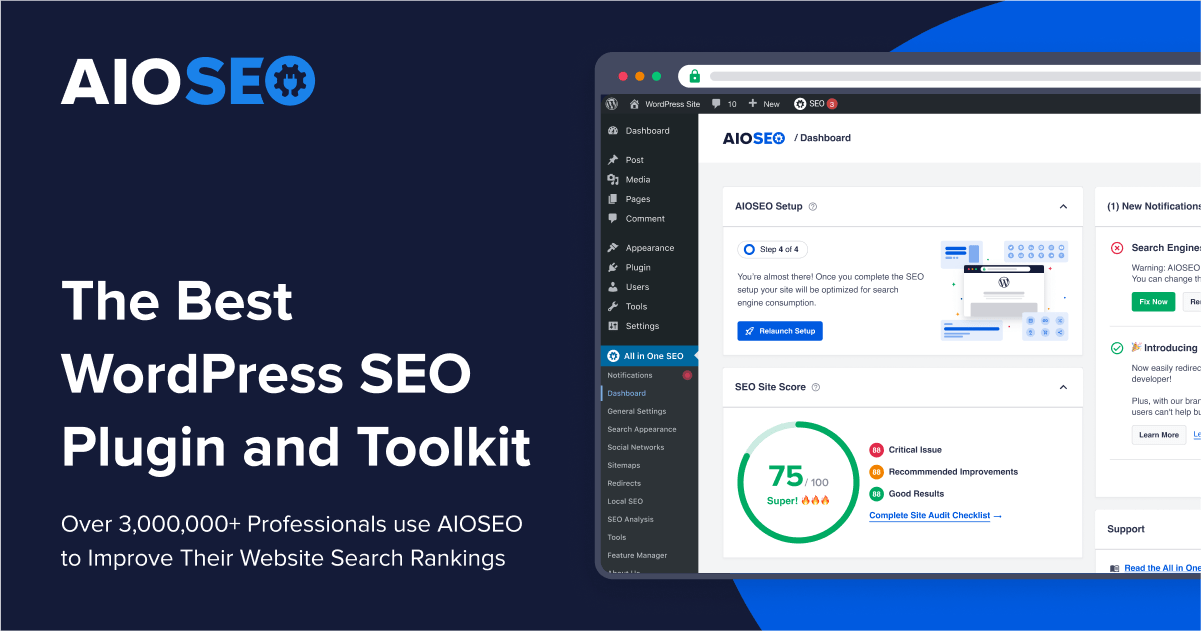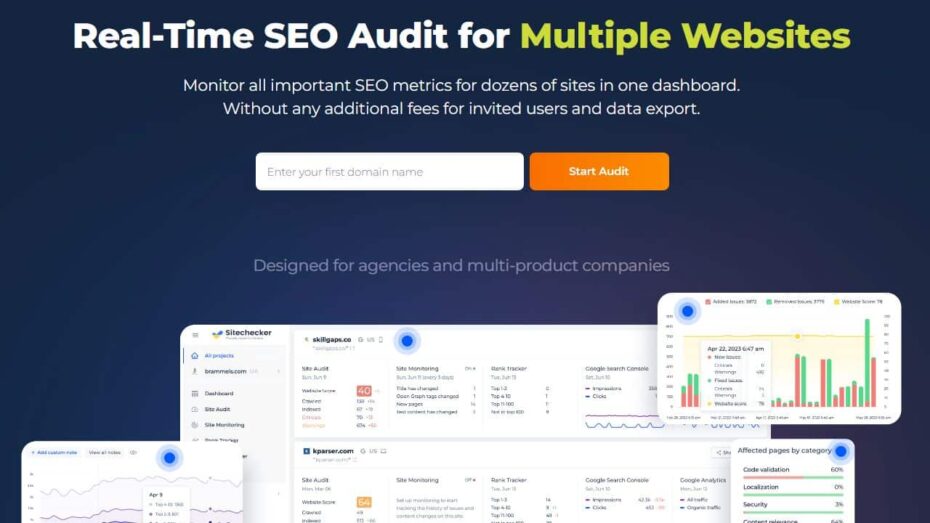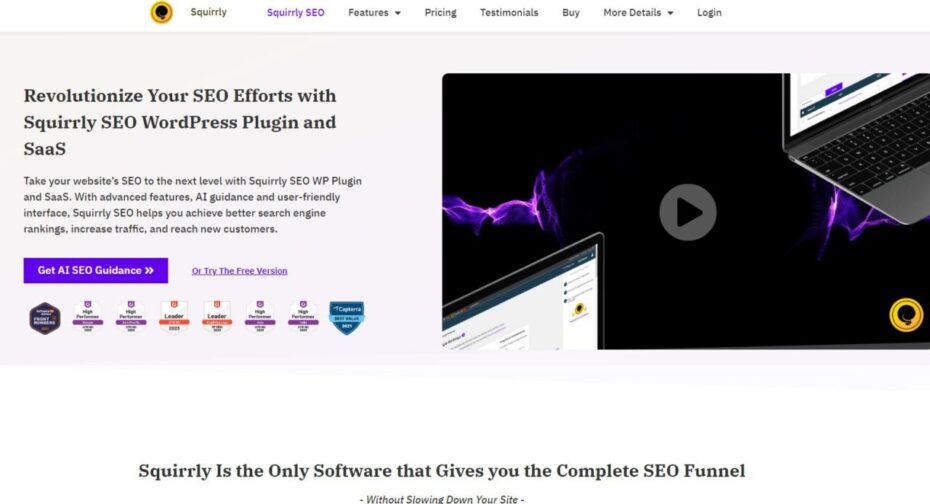Table of Contents
Website content writing is essential for building authority in any niche. Creating high-quality, informative, and engaging content helps establish credibility and trust with your audience.
Understanding the Importance of Website Content Writing
Website content writing plays a pivotal role in establishing and maintaining online authority. High-quality content not only attracts visitors but also keeps them engaged, encouraging them to trust and value your brand. To build authority, it’s essential to focus on creating content that is informative, engaging, and valuable to your target audience.
Effective website content writing involves a deep understanding of your audience’s needs and preferences. By addressing their pain points and providing solutions, you can position yourself as an expert in your field. Furthermore, search engines favor websites with well-crafted content, making it crucial for SEO success.
SEO Services Recommendations
 AIOSEO
|  Sitechecker
|  Squirrly
|
The Role of Content in Building Authority
Content is the foundation of any authoritative website. It serves as the primary medium through which you communicate with your audience, share knowledge, and establish credibility. When you consistently produce high-quality, valuable content, your audience begins to see you as a trusted source of information.
Building authority through content involves more than just publishing articles. It’s about creating a cohesive content strategy that includes blogs, articles, videos, infographics, and other formats that cater to different audience preferences. By diversifying your content, you can reach a broader audience and reinforce your expertise in various areas.
Engaging content that provides actionable insights and solutions helps build trust with your audience. When readers find your content useful, they are more likely to return to your website, share your content, and recommend your site to others, further enhancing your authority.
How Quality Content Impacts SEO
Quality content is a critical factor in search engine optimization (SEO). Search engines like Google prioritize websites with well-written, relevant, and informative content. By focusing on website content writing, you can improve your search engine rankings and drive more organic traffic to your site.
To achieve this, it’s important to incorporate keywords naturally throughout your content. Avoid keyword stuffing, as it can harm your rankings and detract from the user experience. Instead, focus on creating content that addresses the needs and queries of your audience, using keywords in a way that feels organic and natural.
In addition to keywords, other SEO best practices include optimizing meta descriptions, headers, and images. By ensuring that every aspect of your content is optimized for search engines, you can enhance your website’s visibility and attract more visitors. High-quality content also encourages backlinks from other authoritative sites, further boosting your SEO efforts.
Engaging Your Audience with Relevant Content
Engaging your audience with relevant content is key to building and maintaining authority. When your content resonates with your audience, they are more likely to engage with it, share it, and view you as an expert in your field. This engagement is crucial for establishing long-term relationships with your readers.
To create engaging content, start by understanding your audience’s interests and needs. Use this knowledge to craft content that speaks directly to them, addressing their concerns and providing valuable insights. Storytelling can be a powerful tool in this regard, making your content more relatable and memorable.
Another important aspect of engagement is interaction. Encourage your readers to leave comments, ask questions, and share their opinions. Responding to these interactions shows that you value their input and are committed to fostering a community around your content. This active engagement helps build trust and loyalty, essential components of authority.
Finally, keep your content fresh and up-to-date. Regularly updating your website with new content ensures that your audience always has something new to explore. It also signals to search engines that your site is active and relevant, which can positively impact your SEO.
Crafting Compelling Headlines That Captivate
Crafting compelling headlines is a crucial aspect of website content writing. A powerful headline grabs attention, entices readers, and encourages them to explore your content further. An effective headline not only draws in your target audience but also improves your website’s SEO performance by incorporating relevant keywords naturally.
To create headlines that captivate, focus on being clear, concise, and engaging. Your headline should convey the essence of your content while sparking curiosity. Using numbers, questions, and emotional triggers can significantly enhance the impact of your headlines, making them more likely to attract clicks and shares.
Using Power Words for Maximum Impact
Power words are persuasive terms that evoke an emotional response from your readers. Integrating these words into your headlines can make them more compelling and engaging. Words like “ultimate,” “essential,” “proven,” and “guaranteed” can add a sense of urgency and importance to your content, encouraging readers to take action.
When incorporating power words, ensure they align with the overall tone and message of your content. Overuse or inappropriate use of power words can come across as spammy or misleading, so it’s essential to strike a balance. A well-placed power word can transform a good headline into a great one, significantly boosting its effectiveness.
Additionally, consider the context and audience when choosing power words. Different words resonate with different audiences, so tailor your language to match the preferences and interests of your target readers. This personalized approach can increase engagement and make your content more relatable.
Strategies for Creating Attention-Grabbing Headlines
Creating attention-grabbing headlines requires a strategic approach. One effective strategy is to use numbers and lists, as they provide a clear structure and promise specific information. For example, “7 Proven Strategies for Effective Website Content Writing” is likely to attract readers looking for actionable tips.
Another strategy is to ask questions that pique curiosity. Headlines like “Are You Making These Common Content Writing Mistakes?” invite readers to find out more and assess their own practices. Questions engage the reader’s curiosity and encourage them to seek answers within your content.
Incorporating relevant keywords into your headlines is also crucial for SEO. Keywords help search engines understand the topic of your content, improving its visibility in search results. However, avoid keyword stuffing; instead, use keywords naturally to maintain readability and appeal.
Lastly, testing different headlines can provide insights into what works best for your audience. A/B testing allows you to compare the performance of different headlines and refine your approach based on data. This iterative process can lead to more effective and captivating headlines over time.
Developing a Strong Content Strategy
Developing a strong content strategy is fundamental to successful website content writing. A well-thought-out strategy ensures that your content aligns with your business goals, meets the needs of your audience, and drives meaningful engagement. It involves careful planning, consistent execution, and ongoing evaluation to achieve the best results.
A strong content strategy starts with understanding your audience and their preferences. By identifying their interests, pain points, and behaviors, you can create content that resonates and provides genuine value. This audience-centric approach not only attracts visitors but also builds long-term loyalty and trust.
Identifying Your Target Audience
Identifying your target audience is the first step in developing an effective content strategy. Knowing who your audience is allows you to tailor your content to their specific needs and interests. Start by creating detailed audience personas that include demographic information, interests, challenges, and motivations.
Use data from analytics tools, surveys, and social media insights to refine your understanding of your audience. This data-driven approach ensures that your content is relevant and engaging. For instance, if your audience consists of young professionals, you might focus on topics related to career growth and work-life balance.
Understanding your audience also helps in selecting the right content formats. Some audiences prefer long-form articles, while others engage more with videos or infographics. Tailoring your content to these preferences enhances its effectiveness and reach.
Setting Clear Content Goals and Objectives
Setting clear content goals and objectives is essential for guiding your content strategy. These goals should align with your overall business objectives and provide a roadmap for your content creation efforts. Common goals include increasing website traffic, boosting engagement, generating leads, and building brand authority.
Define specific, measurable, achievable, relevant, and time-bound (SMART) objectives for your content. For example, if your goal is to increase website traffic, a SMART objective might be to publish three blog posts per week that target high-traffic keywords and drive a 20% increase in organic traffic within six months.
Regularly review and adjust your goals based on performance data and changing business needs. This flexibility ensures that your content strategy remains effective and responsive to new opportunities and challenges.
Tracking key performance indicators (KPIs) helps measure the success of your content strategy. Metrics such as page views, time on page, bounce rate, and conversion rates provide valuable insights into how well your content is performing. Use these insights to refine your strategy and achieve better results over time.
Writing High-Quality, Informative Content
Writing high-quality, informative content is essential for website content writing that builds authority and engages readers. Quality content not only attracts visitors but also encourages them to stay, explore, and share your site. It demonstrates expertise, fosters trust, and boosts your site’s credibility. Focusing on providing valuable, accurate, and well-researched information can significantly enhance your content’s effectiveness.
To ensure your content stands out, it’s crucial to prioritize clarity, depth, and relevance. Your writing should be well-organized, easy to read, and tailored to your audience’s needs and interests. This approach not only improves user experience but also positively impacts your search engine rankings, driving more organic traffic to your site.
Researching and Gathering Accurate Information
Accurate information is the backbone of high-quality content. Thorough research ensures that your content is reliable, credible, and valuable to your audience. Start by identifying reputable sources such as academic journals, industry reports, and authoritative websites. Cross-check information from multiple sources to verify its accuracy.
Using up-to-date data and statistics enhances the credibility of your content. Cite your sources properly to give credit and provide readers with the option to explore further. Including direct quotes from experts can also add authority and depth to your content.
In addition to external research, leverage internal data and insights. Analyzing your website analytics, customer feedback, and previous content performance can provide valuable information on what resonates with your audience. This data-driven approach helps you create more targeted and effective content.
When gathering information, keep your audience in mind. Focus on topics that are relevant and beneficial to them. Understanding their questions, concerns, and interests allows you to provide solutions and insights that genuinely add value to their experience.
Structuring Your Content for Readability
A well-structured article enhances readability and keeps your audience engaged. Start with a clear introduction that outlines what the content will cover. Use subheadings to break up the text and guide readers through the main points. This structure helps readers quickly find the information they need and improves overall comprehension.
Short paragraphs and bullet points can make your content more digestible. Aim for 2-4 sentences per paragraph to avoid overwhelming your readers. Bullet points are particularly useful for listing key points or steps, providing a clear and concise format that’s easy to follow.
Incorporate visual elements like images, infographics, and videos to complement your text. Visuals can break up large blocks of text, illustrate complex ideas, and increase engagement. Ensure all visual content is high-quality and relevant to the topic.
Use a conversational tone to make your content more relatable and engaging. Address your readers directly, ask questions, and provide actionable advice. This approach creates a connection with your audience, encouraging them to engage with and share your content.
Utilizing SEO Best Practices in Content Creation
Utilizing SEO best practices in content creation is crucial for improving your website’s visibility and driving organic traffic. Effective SEO strategies help search engines understand your content, making it easier for users to find your site. By optimizing your content for both readers and search engines, you can enhance its reach and impact.
SEO involves several elements, including keyword integration, meta descriptions, headers, and internal linking. Implementing these practices thoughtfully and strategically can significantly boost your site’s performance, attract more visitors, and establish your authority in your niche.
Incorporating Keywords Naturally
Keywords are a fundamental component of SEO. Incorporating keywords naturally into your content helps search engines understand the topic and relevance of your page. Start by conducting keyword research to identify terms and phrases your audience is searching for. Use tools like Google Keyword Planner or SEMrush to find high-volume, relevant keywords.
Once you’ve identified your keywords, integrate them seamlessly into your content. Avoid keyword stuffing, as it can harm readability and lead to penalties from search engines. Instead, use keywords in a way that feels natural and enhances the flow of your writing. Aim to include your primary keyword in the title, introduction, subheadings, and throughout the body of your content.
Synonyms and related terms can also help improve your SEO while maintaining readability. They add variety to your content and allow you to cover a topic comprehensively, catering to different search queries. This approach can increase your chances of ranking for multiple related keywords.
Optimizing Meta Descriptions and Headers
Meta descriptions and headers are critical for SEO and user experience. A well-crafted meta description provides a concise summary of your page’s content, encouraging users to click through from search engine results. It should be engaging, informative, and include your primary keyword to improve visibility.
Headers (H1, H2, H3, etc.) organize your content and signal its structure to search engines. The H1 tag should include your primary keyword and clearly state the main topic of the page. Subheadings (H2, H3) break down the content into sections, making it easier to read and understand. They should also include relevant keywords where appropriate.
Using descriptive and keyword-rich headers helps search engines understand the hierarchy and relevance of your content. It also improves readability by providing clear signposts for readers to navigate your article. This structured approach enhances both SEO performance and user engagement.
Internal linking is another effective SEO practice. Linking to other relevant pages on your site helps search engines crawl your site more efficiently and establishes a network of related content. It also keeps readers on your site longer, exploring additional valuable resources, which can reduce bounce rates and increase engagement.
Leveraging Visual Content for Better Engagement
Leveraging visual content is a powerful strategy in website content writing. Visuals such as images, infographics, and videos can significantly enhance user engagement, making your content more appealing and easier to digest. Including high-quality visual content not only attracts readers but also keeps them on your site longer, boosting your SEO performance.
Visual content can break up large blocks of text, making your articles more readable. It also helps in conveying complex information quickly and effectively. By integrating relevant visuals, you can improve the overall user experience, making your content more memorable and shareable.
Importance of Images and Infographics
Images and infographics play a crucial role in website content writing. They add visual interest and can make your content more engaging and accessible. High-quality images that are relevant to your content can capture readers’ attention and illustrate key points more effectively than text alone.
Infographics are particularly useful for presenting complex data and information in a simplified and visually appealing manner. They can summarize statistics, explain processes, and highlight important information at a glance. This makes them highly shareable and can drive more traffic to your website.
When using images and infographics, it’s essential to optimize them for SEO. Use descriptive file names and alt text that include your primary keyword. This helps search engines understand the content of the images and can improve your website’s visibility in search results. Additionally, ensure that your images are properly sized and compressed to maintain fast page load times, which is crucial for user experience and SEO.
Visual content should also be consistent with your brand’s style and message. Use a cohesive color scheme, fonts, and design elements to create a professional and unified look. This consistency helps in building brand recognition and trust among your audience.
How Videos Can Enhance Your Content
Videos are a highly effective form of visual content that can significantly enhance your website content writing. They provide a dynamic way to engage with your audience, offering a richer and more immersive experience. Videos can be used to explain complex topics, demonstrate products, share customer testimonials, and more.
Including videos in your content can increase the time visitors spend on your site, which is a positive signal for search engines. Longer dwell times indicate that your content is valuable and engaging, which can improve your search rankings. Additionally, videos are highly shareable, which can expand your reach and attract new visitors to your site.
To optimize videos for SEO, include relevant keywords in the video title, description, and tags. Transcribing the video and adding subtitles can also enhance accessibility and provide additional content for search engines to index. Embedding videos from platforms like YouTube can also drive traffic back to your site from video search results.
Videos should be high-quality and professionally produced to reflect well on your brand. Ensure good lighting, clear audio, and a stable camera setup. Engaging and informative content will keep viewers interested and encourage them to explore more of your site.
Measuring and Analyzing Content Performance
Measuring and analyzing content performance is essential for understanding the effectiveness of your website content writing efforts. By tracking key metrics, you can gain insights into what works, what doesn’t, and how to improve your content strategy. Regular analysis helps you make data-driven decisions that enhance your content’s impact and reach.
Using analytics tools to monitor content performance provides valuable data on user behavior, engagement, and conversion rates. This information can help you refine your strategy, focusing on the types of content that resonate most with your audience and achieve your business goals.
Using Analytics Tools to Track Success
Analytics tools like Hotjar are indispensable for tracking the success of your website content writing. These tools provide detailed insights into various metrics such as page views, bounce rates, average time on page, and conversion rates. Understanding these metrics helps you gauge the effectiveness of your content and identify areas for improvement.
Set up goals and track specific actions that are important for your business, such as form submissions, downloads, or purchases. Monitoring these conversions helps you understand which content drives the most valuable actions. Additionally, use tools like Serpstat to track keyword rankings and organic search performance, providing insights into how well your content is optimized for SEO.
Analyzing user behavior on your site can reveal patterns and preferences. For example, heatmaps can show where users click the most, while scroll maps indicate how far down a page users typically scroll. This information can help you optimize your page layout and content structure to improve user engagement.
Adjusting Your Strategy Based on Data Insights
Adjusting your content strategy based on data insights is crucial for continuous improvement. Regularly review your analytics data to identify trends and patterns. If certain types of content perform better, consider creating more of that content. Conversely, if some content underperforms, investigate why and make necessary adjustments.
Use A/B testing to experiment with different headlines, images, and calls to action. This allows you to compare performance and determine which variations resonate best with your audience. Implementing these insights can lead to higher engagement and better conversion rates.
Feedback from your audience is another valuable source of insights. Pay attention to comments, social media interactions, and direct feedback to understand what your audience likes and dislikes. Use this information to refine your content and better meet their needs.
Stay updated with industry trends and changes in search engine algorithms. This ensures that your content strategy remains relevant and effective. Adapting to new trends and best practices can give you a competitive edge and improve your content’s performance over time.






